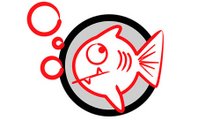Web: www.fishfoto.com -- E-Mail: fish@flyingwithfish.com
19/6/2008 - TSA Institutes New Secondary Security Searches At The Gate
This summer the Transportation Security Administration (TSA) will be making air travel just a little more complex and confusing as it plans to reinstitute additional security screenings at 'the boarding gate.'
The random screening of passengers, who have already cleared TSA security checkpoint, as they enter the gate was stopped quite a while back. The suspension of this practice was a brief moment of joy for frequent flyers, however the TSA is bringing it back this summer and calling it "Aviation Direct Access Screening Program" (ADASP). This new secondary search is intended to include physical hand searches of carry on baggage; secondary search for explosive devises with a mobile detection device; double checking of identification and boarding passes.
A few things come to mind with the double checking of identification and boarding passes at the gate. The TSA does not require you to have proof-positive photo identification. Under the current TSA policies passenger may fly if they have lost or forgotten their photo ID. These passengers are subject to a secondary screening and inspection by a TSA Behaviour Detection Officer (BDO). Once they are determined to not be a threat they are allowed to pass through the security checkpoint.
A concern for photographers should be the risk of significant delay should they be chosen for a secondary hand-search of carry on bags at the gate. Most photographers get to the airport early to allow for extra time in security should they be selected for secondary screenings. At the gate you can't arrive early, as screenings do not begin until the flight has been called for boarding.
Under the previous 'at gate' security checks I missed a flight due to the security check. I had a late connection at Seattle-Tacoma International Airport (SEA), the gate was closing, I handed over my boarding pass and was told I had just made it (the airline was paging me as I was sprinting). Just as I crossed the door the TSA pulled me aside for a random search. Once the TSA agent opened my bag the airline gate agent's eyes went wide and told me she could not hold the flight for me.
What was in my bag? Two digital cameras, approximately 8 lenses, six camera batteries, four flashes, four Pocket Wizards, laptop, remote-data transmit kit, 4 sets of spare "AA" batteries, chargers for camera batteries and "AA" batteries, and other random accessories.
The TSA screener proceeded to empty my entire bag and inspect each item, both visually and with the 'swab test.' I asked why I was being searched now that I had missed my flight and I was told 'procedure.' A normal full search of my bag is generally 5 minutes, this search took 10 minutes. I am sure it is because the TSA screener knew I had now missed my flight.
The TSA's BDOs will be deployed in airports to visually scan for flyers that appear to have signs of fear, stress or deception. Having spoken to many passengers who have a fear of flying, I can't think of any greater stress than already being terrified of the flying experience, then being approached by a uniformed TSA agent for further questioning. I envision many daily frequent flyers as seeing this as a 'show of force,' rather than an actual security tactic.
Overall the idea of this kind of secondary screening further lowers the public perception of the TSA. This does not heighten the sense of security to the flying public, it gives the impression that the TSA has a significant failure rate at the initial screening check point and that they need to try and rectify that during a secondary search.
A question I have is this. The TSA does not intend to increase its staffing levels, so where is this additional staff going to come from? Many airports already operate with limited potential security lanes closed due to low staffing levels. These security lane closures cause delays and increased passenger wait times. Won't pulling TSA screeners off the front lines for the secondary screening create even lower 'front line' staffing levels an further increase passenger wait times?
It has been interesting to find a few sources stating that the TSA’s ADASP teams find a significant amount of 'banned items' at the Gate Searches. Why do all these banned items make it through the primary screening checkpoint?
This, again, does not make me feel safer. This, again, tells me that the TSA needs the right tools to perform their duties at the primary screening checkpoint, and that the TSA needs to provide its screeners with better training.
So to all you summer flyers, keep this in mind when you pack and when you get to the gate.
Happy Flying!
19 June 2008
Subscribe to:
Post Comments (Atom)



2 comments:
Surprise, a government agency doing things the bass-ackwards way instead of really addressing the problem in the manner you suggest! Really makes me look forward to flying internationally this weekend. Hopefully there won't be too many overhead bin hogs on the flight! :)
They better not confiscate my bottle of water at the gate!!!! Ok, I joke, but this is truly mind-boggling. You hit the nail on the head. The fact that they feel they need to do gate checks to catch all sorts of prohibited items only proves the ineffectiveness of the initial security screening.
Post a Comment